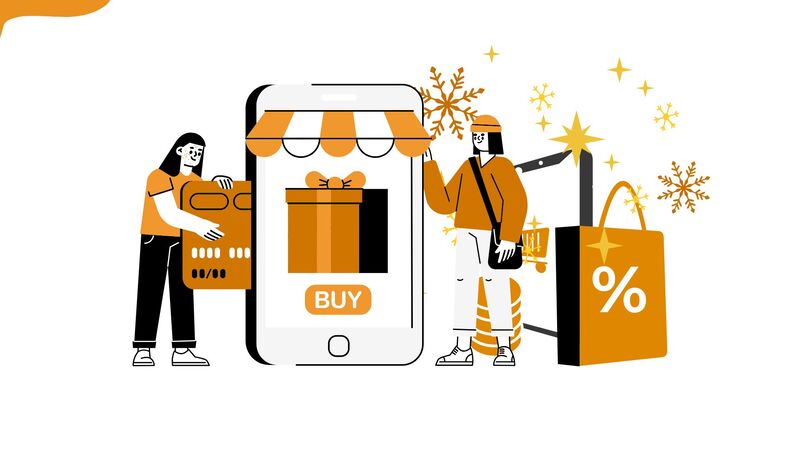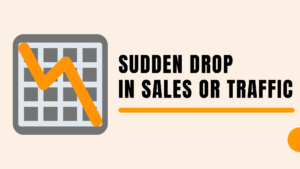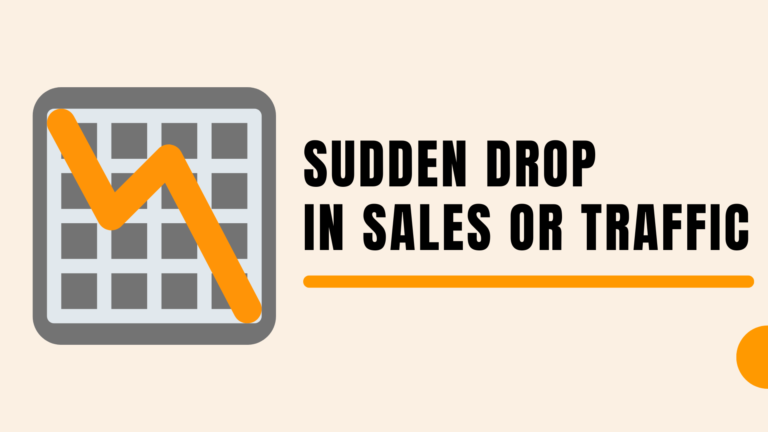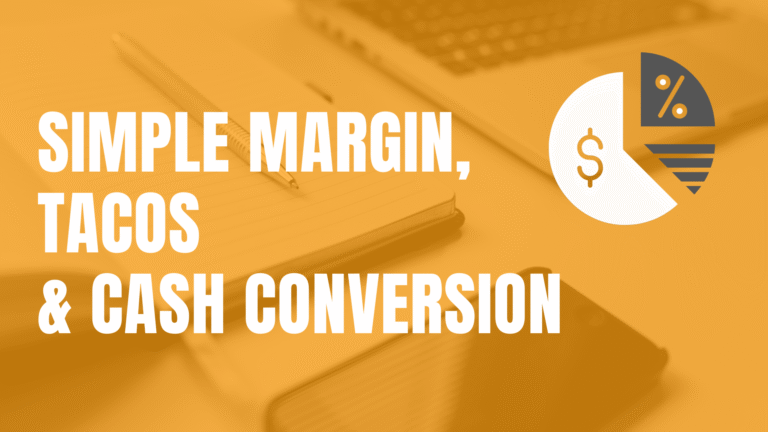As we all know, Q4 is a great chance for Amazon sellers. To stand out during the holiday rush, it’s important to have a strong, data-driven plan that improves your listings, simplifies fulfillment, and increases marketing before the busy season starts.
1. What is Amazon Q4?
Amazon Q4 Dates for Sellers
Q4 is a crucial period for Amazon sellers and the retail industry as a whole. Q4, or the fourth quarter, refers to the period from October through December, which are also the busiest and most critical months of the year for e-commerce.
This time of year really brings the Holiday Shopping Season to life, as people start spending more on gifts and all the festive essentials. The season reaches its peak in the weeks leading up to Christmas.
Important Amazon Q4 Dates in 2025:
| Event | Approximate Timing |
| Prime Big Deal Days | October 7-8, 2025 |
| Halloween | October 31, 2025 |
| Thanksgiving | November 27, 2025 |
| Black Friday | November 28, 2025 |
| Cyber Monday | December 1, 2025 |
| Christmas/Holiday Season | December 24-25, 2025 |
| New Year’s Eve/Day | December 31, 2025 – January 1, 2026 |
Amazon Q4 2024 Revenue: In the fourth quarter of 2024, total net sales reached $187.8 billion, up 10% compared with Q4 2023. Amazon achieved record delivery speeds for Prime members. Black Friday Week and Cyber Monday events set new records, particularly for independent sellers on Amazon’s platform.

2. Amazon Shopper Behavior in Q4 2025: Trends and Insights
Fast, Reliable Shipping:
Consumers often view fast and reliable shipping as a standard expectation. Many anticipate delivery in two days or less, while some even seek same-day options. High shipping costs are a key reason for cart abandonment.
In a survey carried out by Statista, it was found that high delivery fees are the primary reason for abandoning their carts in France. Additionally, a considerable portion of e-shoppers mentioned that long or uncertain delivery times also contributed to their decision not to finalize their online purchases.
So, leverage FBA to offer Prime shipping and enhance visibility, while having a backup plan (FBM) in case of FBA delays. Offer free shipping whenever possible by bundling items or increasing the average order value (AOV) to hit a free shipping threshold.
Flexible Payments:
An efficient checkout process that provides payment options is essential for reducing cart abandonment rates and increasing conversions throughout the hectic holiday shopping season. Make sure the checkout process is straightforward and secure. Amazon seamlessly manages various payment methods.
A report from Adobe indicated that UK consumers utilized Buy Now, Pay Later (BNPL) services to spend a cumulative £3.6 billion throughout the 2024 holiday season. On Cyber Monday, this payment method saw a remarkable £152.8 million in spending, setting a new record for the most money spent in a single day using this option.
Highlight BNPL options for higher-priced gifts, as this allows budget-conscious shoppers to complete their purchase immediately.
Make the most of Lightning Deals, coupons, and special promotions to attract shoppers looking for bargains, especially during big events like Black Friday and Cyber Monday.
Social Commerce Influence:
Social media has evolved from a platform for product discovery to a direct sales channel. Social media has become the leading channel for product discovery (source: HupSpot). According to the SurveyMonkey survey, 47% of Gen Z draws purchase inspiration from social media.
Utilize Amazon’s social commerce tools like Amazon Live, Amazon Inspire, and Amazon Posts, and run targeted ad campaigns on social media platforms
Sustainability:
A growing segment of consumers is willing to pay a premium for sustainably produced goods. So, clearly communicate any sustainability benefits of your products in your listings, A+ Content, and Brand Store.
Here is an overview of the four shopper segments for deals:
High-value shoppers are the ones who drive revenue. They usually have a high Average Order Value (AOV) and Customer Lifetime Value (CLV). These shoppers are less sensitive to price and tend to seek quality, premium products, and a unique experience. The best approach is to offer exclusive perks and tiered or bundled deals.
For repeat customers, focus on retention and their next purchase with personalized offers and loyalty rewards.
With holiday gift buyers, aim for gift-themed bundles and contextual promotions.
Bargain hunters pay close attention to prices. They constantly search for irresistible discounts, coupons, and special sales like Black Friday. This group often waits to buy until they can find the best deals. They are determined to uncover the biggest markdowns. Flash sales create excitement and push for quick choices. Using promotions to sell slower items helps keep profit margins on products that are selling well.
The fourth quarter is vital for Amazon sellers due to key shopping events like Prime Day and Big Deal Days. For sellers, success in this period relies heavily on careful preparation.
Read more Amazon Vendor vs. Amazon Seller: Pros and Cons
3. Amazon Q4 Strategy: Operations and Fulfillment
3.1. Forecast Demand Accurately
- Review your sales data from the same period last year (Q4), focusing on key events like Black Friday, Cyber Monday, and the last-minute holiday rush. Make adjustments for this year’s growth trends, new competitors, and any major marketing campaigns for specific products.
- Use statistical models such as regression analysis or modern machine learning algorithms and AI tools to handle complex data. These tools can include outside factors like economic indicators, weather patterns, and social media trends for a more reliable prediction.
- To make sure you’re ready for unexpected spikes in demand, consider adding a buffer of 20 to 30% to your forecasts, especially for your best-selling products. This way, you’ll have enough stock on hand during those crucial shopping times.
3.2. Plan Inventory and Buffer Stock
- Keep an eye on your restock limits from the beginning. Amazon sets FBA restock limits based on your account history and Inventory Performance Index (IPI). Check the Restock Limits column in Seller Central regularly. Make sure to allocate inventory for your best-selling, high-margin products first.
- Clear out slow-moving or excess inventory early by using discounts, Amazon Outlet, or removal orders.
- It’s a smart move to keep some safety stock outside of FBA, whether that’s in a local warehouse or with a Third-Party Logistics (3PL) provider.
- Make sure to prioritize your incoming shipments. Keep in mind Amazon’s Q4 FBA inventory cut-off dates and plan for your shipments to arrive at least 2 to 3 weeks ahead of those deadlines, since FBA processing times can really ramp up during Q4.
3.3. Monitor Inventory Performance Index and Storage Limits
Four key factors drive the Inventory Performance Index (IPI) score:
- To manage surplus inventory, frequently review the Manage Excess Inventory page. You can decrease stock by liquidating it, executing promotions such as Lightning Deals, or providing coupons. Additionally, you might consider bundling slower-moving products with your top sellers. Another option is to generate removal orders for inventory that isn’t selling.
- Increase sell-through rate: A low rate means your stock is sitting too long. Improve listing quality, run targeted ads, and use a dynamic repricer to keep prices competitive and speed up sales.
- Need to tackle stranded inventory fast? This is all about the stock sitting in Amazon’s warehouse that can’t be sold because of a listing issue. Make it a habit to check the Stranded Inventory Report every day. Fix listing issues quickly, such as compliance or suppressed listings, or create removal orders.
- Stay in stock: Avoid stock-outs on your bestsellers by using an inventory management tool to set reorder points and monitor the SKUs that need restocking today.
3.4. Replenish Stock on a Tight Schedule
- Work backwards from peak dates: Calculate your lead times for manufacturing, transit, and FBA processing. Q4 lead times can be significantly longer. Plan your supplier orders based on your required in-stock date before Black Friday/Cyber Monday.
- Small, frequent shipments: To manage restock limits and avoid overage fees, utilize small, regular purchase orders to maintain sufficient stock levels rather than sending one massive shipment.
- Expedited transfers (If necessary): If FBA inventory is running low and there’s a risk of stock-out due to slow check-ins, consider sending a small parcel shipment instead of LTL (Less-Than-Truckload) to get inventory levels healthy fast, though this is a more expensive option.
3.5. Diversify Fulfillment Options
A hybrid fulfillment model provides better resilience. Use FBA for fast-moving, standard-size products and send inventory early. Keep an FBM option ready for bestsellers or oversized items to avoid stockouts or high fees. Use 3PLs for extra storage, safety stock, and backup fulfillment.
The optimal approach for Q4 integrates FBA (60 to 70%) alongside 3PL/FBM (30 to 40%) in order to leverage Prime advantages, manage expenses, and ensure fulfillment consistency.
3.6. Audit Warehouse and Logistics Operations
- Check warehouse capacity and seasonal staffing.
- Test picking, packing, and labeling processes for speed and Amazon compliance.
- Track and clear old inventory to make room for bestsellers.
- Negotiate carrier rates and capacity early.
- Verify holiday shipping deadlines and prepare alternative carriers for last-mile fulfillment.
- Keep a financial safety net to handle unexpected expenses, such as expedited shipping or increases in storage fees.
- Ensure your FBM contingency plan is equipped with packaging and labels so you can quickly adapt to any FBA restrictions that may arise.

4. Amazon Q4 Deal Strategy
4.1. Types of Q4 Deals
Various promotions for sellers to use during Q4:
- Lightning Deals: This promotion is for a limited time and has limited quantities. It creates a sense of urgency and gets a lot of visibility on the Amazon Deals Page. It runs for about 4 to 12 hours.
- Best Deals: These offers are available for a longer time than Lightning Deals. They get prominent exposure on both the Amazon Deals page and the homepage.
- Coupons: Flexible and easy to create, coupons enhance search results and visibility on the Deals page and product detail pages through automated merchandising.
- Prime Exclusive Offers: Targets high-intent Prime members and offers event-specific badging, which can increase conversion.
- Promotions (Percentage Off, Buy One Get One): Excellent for cross-selling, bundling, or enticing new customers with a tiered discount structure.
Submit your deals early to secure placement, especially for high-traffic events like Black Friday, and to ensure your inventory is in stock at FBA centers.
Best practices:
- The absolute last chance for major event deals (Lightning, Best Deals) is typically late October (e.g., October 28th). Submissions after the main deadline lose eligibility for prime promotional placement.
- Ship your inventory to FBA at least 3-4 weeks before the event to account for potential peak-season delays. Amazon prioritizes outbound orders in November, slowing inbound check-in.
- Improve your product titles, images that feature seasonal or gift themes, A+ Content, and backend keywords.
4.2. Seasonal Pricing Models for Amazon Q4
A solid pricing strategy for Q4 should be flexible and adaptable, striking a balance between sales volume, competitive pressures, and profitability.
- Dynamic Pricing: Algorithms consistently modify prices according to various factors, including demand, actions of competitors, time of day, inventory status, and customer actions.
- Competitive Pricing: Price your products at or slightly below key competitors to maintain Buy Box share, which is critical for conversion. Monitor and adjust prices daily.
- Value-Based: Pricing products based on the perceived value to the customer, often highlighting unique seasonal benefits like “Limited Edition.” Use in conjunction with high-margin items. Promotions are used to anchor a high initial value (e.g., “Save 30% off the regular price”) to make the deal seem more substantial.
- Psychological Pricing: Using strategies like price ending in .99 (e.g., $19.99) to influence customer perception.
Use to create urgency (“Time-Limited Offer”) or to bundle complementary products, increasing the Average Order Value (AOV).
4.3. Maximizing ROI from Promotions
The highest return on investment in the fourth quarter can be realized by aligning your offerings with a well-rounded marketing plan that spans multiple channels.
Special promotions serve as the motivating factor (the deal), whereas pay-per-click advertising and email marketing deliver the necessary traffic and exposure to achieve rapid sales growth and enhance organic ranking.
Combining Deals with PPC Campaigns:
PPC (Pay-Per-Click) campaigns on Amazon drive immediate, high-intent traffic to your listings, and coupling them with an active deal dramatically increases the conversion rate.
Synchronize Campaigns and Deals:
- Initiate focused Sponsored Product and Sponsored Brand campaigns centered on popular seasonal keywords and rival ASINs to take advantage of the deal badge benefit.
- Increase bids and budgets substantially, but higher conversion rates typically sustain strong ROAS.
- Update ad copy to clearly highlight promotions. Use Sponsored Display ads to retarget shoppers who viewed but didn’t buy. Entice them back with limited-time offers or small coupons.
Combining Deals with Email Marketing:
Email marketing, particularly to your existing customer base, is a low-cost, high-ROI channel for driving external traffic to your Amazon deals.
- Use Amazon’s Brand Tailored Promotions to create exclusive discounts for high-value segments like Repeat Customers.
- Send targeted emails to your subscriber list a few hours before the deal goes live to build anticipation.
- Direct them with a clear link to the Amazon product page where the coupon or deal badge is visible.
Urgency and exclusivity:
- Promote a “Subscriber-Only Early Access” to the Amazon deal.
- Follow up with customers who purchased with a cross-sell promotion on a complementary product to increase the customer lifetime value (CLV).
5. Amazon Q4 Strategy: Advertising & Marketing
5.1. Launching Campaigns Early
Battle-Test Creatives:
Launching campaigns during the quieter weeks of October and early November lets you A/B test various ad copy, visuals, and landing pages. This way, you can find what converts best while ad costs are still relatively low. This testing phase helps you collect data and make sure your top-performing assets are ready to grow when consumer intent is at its highest.
Approval Time:
Advertising platforms (like Google, Meta, or Amazon) can experience delays in ad review and approval during the holiday rush. Submitting campaigns early mitigates the risk of missing out on a peak sales day because your ad is stuck in review.
Audience Warming:
Launching campaigns ahead of time assists in nurturing and preparing your retargeting audiences (individuals who have browsed your website or interacted with your advertisements). This is a vital process, as these “engaged” audiences typically have a higher conversion rate and play a crucial role in enhancing return on ad spend (ROAS) during the busiest shopping periods.
5.2. Budget Allocation and Monitoring
- Front-Loading: Allocate a significant portion of your budget to the peak period (late November/early December). Competition and cost per click (CPC) will be at their highest, but the return on ad spend (ROAS) can also be maximized due to extremely high purchase intent.
- Real-Time Tracking & Agility: Create a framework for ongoing observation of important metrics. You should be ready to adjust your spending immediately. If a certain ad, product, or channel is performing exceptionally well, be prepared to direct more budget towards it.
- Profit-Driven Bidding: Given the high ad costs, focus on bidding strategies that prioritize profitability rather than just volume.
5.3. Types of Ads to Use
- Sponsored Products: These are cost-per-click (CPC) ads that promote individual product listings. They are important for shoppers looking for specific keywords on the platform, placing your product directly in the shopping results for immediate purchase.
- Sponsored Brands: These ads usually have a custom headline, logo, and a selection of products. They direct traffic to a Brand Store or a custom landing page. They work well for increasing brand awareness and promoting product lines or gift guides.
- Sponsored Display: These advertisements assist you in reaching potential customers both within and outside the selling platform.
6. Amazon Q4 Strategy: Monitoring & Optimization
6.1. Track Key Metrics
- Sales Trends: Keep an eye on daily and hourly sales trends compared to your forecasts, particularly during big events like Black Friday and Cyber Monday.
- Amazon ACoS / ROAS: These are the key metrics for measuring the profitability of paid advertising. Track them not only at the campaign level but also at the product and keyword level. This helps you pause or improve things that aren’t performing well and boost the successful ones.
- Conversion Rates: A dip in conversion rate, even with high traffic, signals an issue. It could mean your pricing is uncompetitive, your landing page is slow, or your product is out of stock. Closely track product page conversion rate and checkout abandonment rate.
6.2. Manage Customer Feedback
- Reviews and Ratings: New customers look for recent reviews when they are making purchases. Focus on collecting and showing positive reviews from Q4. Use automated or manual follow-ups to encourage buyers to leave feedback.
- Q&A: Keep an eye on product questions and respond quickly.
- Service Response Times: Make sure your team is ready and has prepared responses for common issues like shipping delays, returns, exchanges, and holiday hours.
- Service Response Times: Ensure your team is staffed and prepped with canned responses for common issues (shipping delays, returns/exchanges, holiday hours).
6.3. Adjust Strategy in Real-Time
- Keep a close eye on your top competitors’ activities. If a major competitor drops their discount from 20% to 30%, you need to be ready to adjust your own deal to remain competitive, or pivot your ad spend to a product they aren’t discounting. Besides, see what seasonal themes or deals they are promoting and ensure your messaging stands out, or at least is current with market expectations.
- Prepare to take advantage of sudden increases in demand. If a news article or viral social media post raises interest in a specific product category, quickly change your budget and bids for related keywords and ad groups to capture the traffic.
- Adjust campaigns based on inventory levels. Don’t run high-budget campaigns for products that are nearly out of stock. For items with plenty of inventory, raise ad spending and use more aggressive bidding strategies to sell off stock before the end of the year.
Conclusion
If you want quick wins, focusing on Sponsored Products and Lightning Deals might be the right choice. Amazon is also pushing Buy with Prime and launching new AI-driven advertising tools this season. These can give your listings a strong advantage if you’re ready to spend some time on optimization.
A solid strategy for building enduring brand momentum is to prioritize A+ Content and Storefront upgrades. However, embrace a well-rounded approach by blending performance advertising with effective organic optimization, as this combination yields both immediate holiday successes and sustainable growth leading into Q1.
FAQs
How long does Q4 last?
Q4, or the fourth quarter, refers to the period from October through December, which are also the busiest and most critical months of the year for e-commerce. This quarter experiences a notable increase in consumer demand due to seasonal shopping, holiday readiness, and important retail occasions.
When should I start Q4 advertising campaigns?
It’s best to begin developing Q4 advertising campaigns by early September and initiate the first campaigns by late September or early October. This timeframe provides an opportunity to collect performance data, fine-tune targeting, and create momentum ahead of major events such as Black Friday and Cyber Monday.
Why is optimization critical for Q4?
Q4 is the most competitive and high-traffic period of the year. With spikes in demand, advertising costs, and shipping constraints, every element, from listings to fulfillment, must run efficiently.
What are the biggest mistakes new sellers make in Q4?
New sellers often make significant errors in Q4, such as inadequate inventory management, initiating campaigns too late, and not tailoring listings with seasonal keywords. Many also fail to manage their advertising budgets properly.
When is it too late to send inventory to FBA for Christmas?
Typically, if your inventory isn’t received and processed by late November to early December, it’s considered too late to send it to FBA for Christmas. Amazon usually suggests that your inventory should reach fulfillment centers by November 15–20 to guarantee it’s available for holiday customers.








